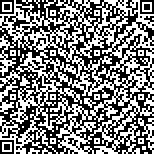本文已被:浏览 2145次 下载 3544次
投稿时间:2014-03-17 修订日期:2015-09-09
投稿时间:2014-03-17 修订日期:2015-09-09
中文摘要: 通过模拟热浪天气对冠心病小鼠影响实验研究,探讨高温热浪对冠心病影响的机理。应用TEM1880气象环境模拟箱模拟一次实际的热浪天气过程,按体重大小将18只冠心病小鼠分配至6个区组,每个区组3只,再将3只小鼠随机分配到对照组、热浪组、热浪BH4组中,每组共有6只小鼠。放入模拟箱内,使其受热浪天气影响,模拟热浪天气结束后,采用断头采血和摘取心脏,测量各组小鼠的ET 1、NO、HSP60、SOD、TNF、sICAM 1和HIF 1α的含量。结果表明,热浪天气可导致冠心病小鼠心肌组织SOD活性明显下降,而NO、HSP60、TNF、sICAM 1和HIF 1α的含量增加,但对ET 1水平没有任何影响。通过各项生化指标分析得知,热浪可诱导冠心病小鼠心肌组织HSP60含量明显增加,过多的HSP60可以活化免疫细胞,诱导内皮细胞、巨噬细胞分泌大量ICAM 1、TNF α等炎性细胞因子,进而激活体内炎症系统,破坏冠状血管内皮细胞结构,使血管内膜通透性增高,心脏组织SOD活性下降,使氧化血液中的脂蛋白加剧,大量的胆固醇加速了胆固醇穿透内膜在血管内壁上的沉积,形成动脉粥样硬化,致使冠心病病情加重;从而诱导ICAM 1、血栓素等血管活性物增加,造成血粘度增加,促使血栓的形成;抑制脂蛋白酯酶活性,诱导脂质浸润血管内膜,形成动脉硬化斑块,同时控制巨噬细胞的胆固醇代谢,利于脂质物质沉积于血管壁而增加冠脉疾病风险。该实验是高温热浪导致冠心病病情加重,甚至死亡的初步机理研究成果,可为我国高温热浪预警服务和冠心病防御等提供理论依据。
Abstract:The influence mechanism of heat wave on coronary heart disease is preliminarily discussed through simulation experiment of heat wave impact on coronary heart disease rats in this paper. The heat wave process was simulated in an environmental test chamber (TEM1880). Eighteen coronary heart disease rats were randomly divided into control group, heat wave group and heat wave BH4 group with 6 rats in each group. The rats in heat wave group and BH4 group were placed into the simulation chamber. After the process of simulated heat wave, their blood was drawn by decollation and the mice hearts were extracted to measure the content of ET 1, NO, HSP60, SOD, TNF, sICAM 1 and HIF 1α of rats in each group. The results showed that heat wave can lead to significant decrease of myocardial tissue’s SOD activity in coronary heart disease rats and increase of NO, HSP60, SOD, TNF, sICAM 1 and HIF 1α content. However, it has few effect on ET 1 level. Through the analysis of biochemical index, heat waves can induce prominent increase of myocardial tissue’s HSP60 level in coronary heart disease rats. Superabundant HSP60 can activate immune cells, induce endothelial cells and macrophages to secrete a large number of inflammatory cytokines (such as ICAM 1 and TNF α), and then activate inflammation system in the body, damage coronary vascular endothelial cells structure, increase vascular endothelial permeability and decrease heart tissue SOD activity, increase the lipoprotein of oxidation blood, generate a large amount of cholesterol, speed up the deposit of cholesterol on the lining of blood vessels through the lining, result in atherosclerosis and aggravation of coronary heart disease, then induce increase of vascular active matter such as ICAM 1 and thromboxane, increase blood viscosity which is conducive to the formation of blood clots, restrain lipoprotein lipase activity, induce lipid infiltration of vascular intima which is conductive to arteriosclerosis plaque; and control the cholesterol metabolism of macrophage at the same time, which is conducive to the deposition of lipid material in vascular wall and thus increase risk of coronary artery disease. This is the preliminary mechanism of how high temperature and heat wave lead to exacerbation of coronary heart disease and even death, and can lay a foundamental theoretical basis for warning high temperature and heat wave in public service.
文章编号: 中图分类号: 文献标志码:
基金项目:国家自然科学基金项目(41375121)资助
| 作者 | 单位 |
| 张书余 | 河北省信息工程学校,保定 071000 |
| 张夏琨 | 南京信息工程大学大气科学学院,南京 210044 |
| 田颖 | 南京信息工程大学应用气象学院,南京 210044 |
| 王宝鉴 | 兰州中心气象台,兰州 730020 |
引用文本:
张书余,张夏琨,田颖,王宝鉴,2015.模拟热浪天气对冠心病影响及其机理实验研究[J].气象,41(6):761-770.
ZHANG Shuyu,ZHANG Xiakun,TIAN Ying,WANG Baojian,2015.Effect and Its Mechanism of Artificial Heat Wave on Coronary Heart Disease[J].Meteor Mon,41(6):761-770.
张书余,张夏琨,田颖,王宝鉴,2015.模拟热浪天气对冠心病影响及其机理实验研究[J].气象,41(6):761-770.
ZHANG Shuyu,ZHANG Xiakun,TIAN Ying,WANG Baojian,2015.Effect and Its Mechanism of Artificial Heat Wave on Coronary Heart Disease[J].Meteor Mon,41(6):761-770.

